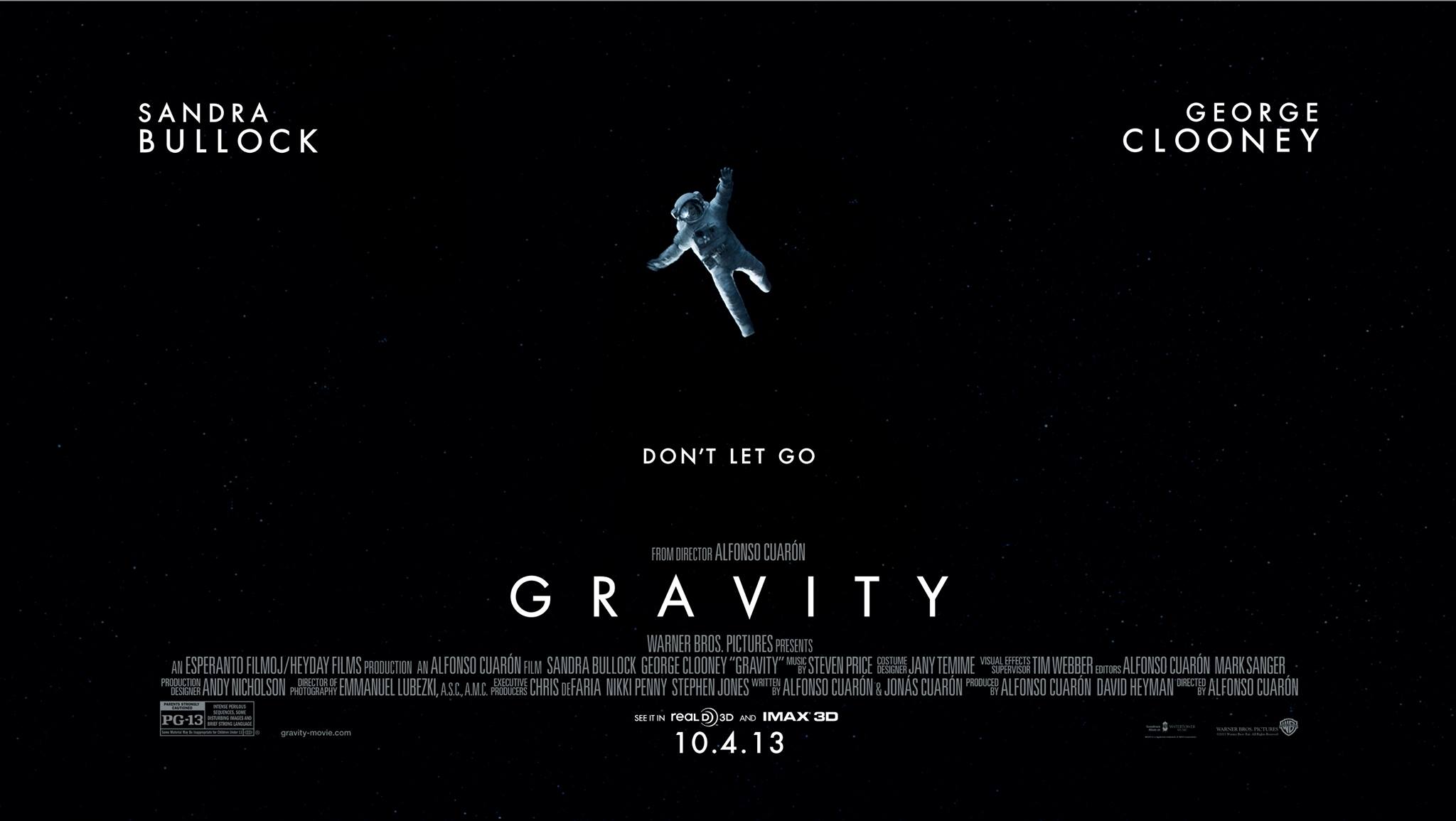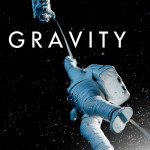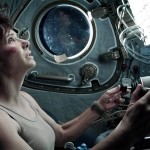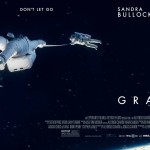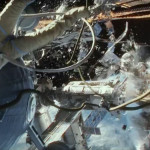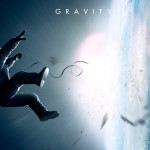Tuesday night in Mansfield, cinema barely over a mile away. The only question was which movie: nigh on 3 hours of Hobbit p2 or 93 minutes of Gravity. Well I found 3D glasses in my car, so the visually stunning 3D Gravity it was. Regular readers will know that I am deeply sceptical of anything 3D, because it is generally an excuse for lame effects like something falling into the audience and a looming hand projecting outwards to pick it up. Not a substitute for quality script or acting, in other words, generally just a special effect to divert from the lack of sustainable content.
Gravity, however, requires a little adjusting of flight parameters. There is comparatively little spoken, and quite a lot that is spoken is superfluous. Not a lot happens either, to the extent that one friend suggested its 93 minutes felt more like 930, and another felt it was all special effects and little substance. With reservations, I’m going to demur on that point. If you expected a thriller you would be disappointed, but do films always need a detailed narrative structure on which to hang a story?
Not always. In fact less can be more when a slow-moving picture allows each detail to count, to demonstrate it’s relevance, practical and symbolic. Here, every minute step along the route to survival is fraught with such difficulty that death at times seems a certainty as the devastating impact of a satellite hurling debris into space at high speed takes a massive toll on human life and equipment. So as a philosophical and elegiac piece on the nature of being truly alone and the survival instinct, it’s beyond compare in that respect, more dead calm than Dead Calm, more spacious than Solaris, creepy as 2001 in the stillness beyond an atmosphere. This is authentic as space movies get, but its themes are very human. From Wikipedia:
Despite being set in outer space, the film draws upon motifs from shipwreck and wilderness survival stories about psychological change and resilience in the aftermath of catastrophe. Cuarón uses Stone to illustrate clarity of mind, persistence, training, and improvisation in the face of isolation and the mortal consequences of a relentless Murphy’s Law.
The film incorporates spiritual themes both in terms of Ryan’s daughter’s accidental death, the will to survive in the face of overwhelming odds, as well as the impossibility of rescue. Calamities unfold but there are no witnesses to them, save for the surviving astronauts.
The impact of scenes is heightened by alternating between objective and subjective perspectives, the warm face of the planet and the depths of dark space, the chaos but also predictability of the deadly debris field, and silence of the vacuum of space with the sound of the score. The film uses very long and uninterrupted shots throughout to draw the audience into the action but also contrasts these with claustrophobic shots within space suits and capsules.
Some commentators have noted religious themes in the film. For instance, Catholic author Fr. Robert Barron summarizes the tension between Gravity’s technology and religious symbolism, “The technology which this film legitimately celebrates… can’t save us, and it can’t provide the means by which we establish real contact with each other. The Ganges in the sun, the St. Christopher icon, the statue of Budai, and above all, a visit from a denizen of heaven, signal that there is a dimension of reality that lies beyond what technology can master or access… the reality of God”.
Human evolution and the resilience of life can also be seen as a key theme of the movie. The movie opens with the hitherto climax of human civilisation, the exploration of space, and ends with an allegory to the dawn of mankind, when Dr. Ryan Stone (Bullock) fights her way out of the ocean after the crash-landing, passing an amphibian, grabbing the soil of the shore and slowly regaining her capacity to stand upright and walk. In an interview director Cuarón notes: “She’s in these murky waters almost like an amniotic fluid or a primordial soup. In which you see amphibians swimming. She crawls out of the water, not unlike early creatures in evolution. And then she goes on all fours. And after going on all fours she’s a bit curved until she is completely erect. It was the evolution of life in one, quick shot”. Other imagery depicting the formation of life include a scene in which Dr. Ryan Stone rests in the position of an embryo, surrounded with a rope strongly resembling an umbilical. Dr. Ryan Stone’s return from space, accompanied by meteorite-like debris, may be seen as a hint that elements essential to the development of life on earth may have come from outer space in form of meteorites.
Where I do take issue is with the ending. Not just that it is predictable, which it is, but that the predictability is manufactured into a dramatic crescendo by Alfonso Cuaron (who does everything bar make the tea and act ) thanks to loud music and earth landing special effects. The music is overblown, it distracts, lessens the impact of the visuals, fails to convey the mood, unlike, say, the Strauss waltz employed to such great effect in 2001: A Space Odyssey. Maybe in this case it needs Clooney to break out into Bowie’s Space Oddity?
Sandra Bullock emotes with a grin and a chuckle, but her reactions don’t convince me after the ordeal she has been through in her role as a scientific advisor. George Clooney as experienced pilot Kowalski does look and sound the part, Clooney doing what Clooney does best – playing Clooney with raffish macho charm but apparently no sense of self-preservation – he appears more concerned about breaking the record for space walking and maximising Bullock’s chances of survival, though he does briefly return in her hallucinating state to make a passable effort at manipulating the controls of the Chinese space station. In the words of Simon Mayo, Clooney plays the role like Buzz Lightyear, yet I am assured this is indeed true to these modern frontiersmen, the astronauts.
But let’s return to what Cuaron does best. The movie opens with a shot of earth from space as a shuttle gradually hoves into view. Close by its open underbelly Dr Ryan Stone is trying to initialise her scientific instrumentation while her colleague Kowalski amuses himself with a jet pack. Not long passes before flying debris smashes through the ship, kills the crew and leaves Stone in a terminal tail spin until Kowalski tethers her. We watch her spin, zoom in so we are spinning with her, then out once more to see earth rotating beneath her.
Later on we see the pair vainly trying to enter a damaged space station. As Stone loses Kowalski but finds a damaged station with an exit pod – and just about manages to launch herself free as the space station burns, then explodes into a trillion fragments in slow motion. It is the visual equivalent of a tsunami – incredibly destructive yet strangely beautiful. In this case, the eerie silence adds to the power of the destructive force.
That sequence alone is truly breathtaking, and would undoubtedly have been so in 2D as well. The spacescapes are sublime, more complete and yet realistic than any other yet portrayed on the big screen. If you’d told me it had been shot in outer space, chances are I’d have believed you, yet they were created with a set and a rig! Courtesy of Wikipedia:
Gravity had a production budget of $100 million and was filmed digitally on multiple Arri Alexas. Principal photography on the film began in late May 2011. Live elements were shot at Pinewood and Shepperton Studios in the United Kingdom.[38] The landing scene was filmed at Lake Powell, Arizona (incidentally where the astronauts’ landing scene was filmed in Planet of the Apes). Visual effects were supervised by Tim Webber at Framestore in London. The 3D was designed and supervised by Chris Parks. The majority of the 3D was created through stereo rendering the CG at Framestore with the rest post converted, principally at Prime Focus, London with additional conversion work by Framestore. Prime Focus’s supervisor was Richard Baker. Filming began in London in May 2011. The film contains only 156 or so shots, with an average shot length of 45 seconds, resulting in fewer and longer shots than in most films of this length. Although the first trailer had audible explosions and other sounds, in the final film these scenes are silent. Cuarón said, “They put in explosions [in the trailer]. As we know, there is no sound in space. In the film, we don’t do that.” The soundtrack in the film’s space scenes is populated only by the musical score and sounds astronauts would hear in their suits or the space vehicles.
Most of Bullock’s shots were done with her inside of a giant mechanical rig. Getting into the rig took a significant amount of time, so Bullock opted to stay in it for up to 10 hours a day, communicating with others only through a headset. Cuarón said his biggest challenge was to make the set feel as inviting and non-claustrophobic as possible. The team attempted to do this by having a massive celebration when Bullock arrived each day. They also nicknamed the rig “Sandy’s cage” and gave it a lighted sign reflecting this.
Clearly this is another marmite of a movie that will not agree with everyone, yet it can be appreciated for what it is, regardless. And what it is is a tale of survival against the odds in the most forbidding of environments. Think I will give space walking a miss.

